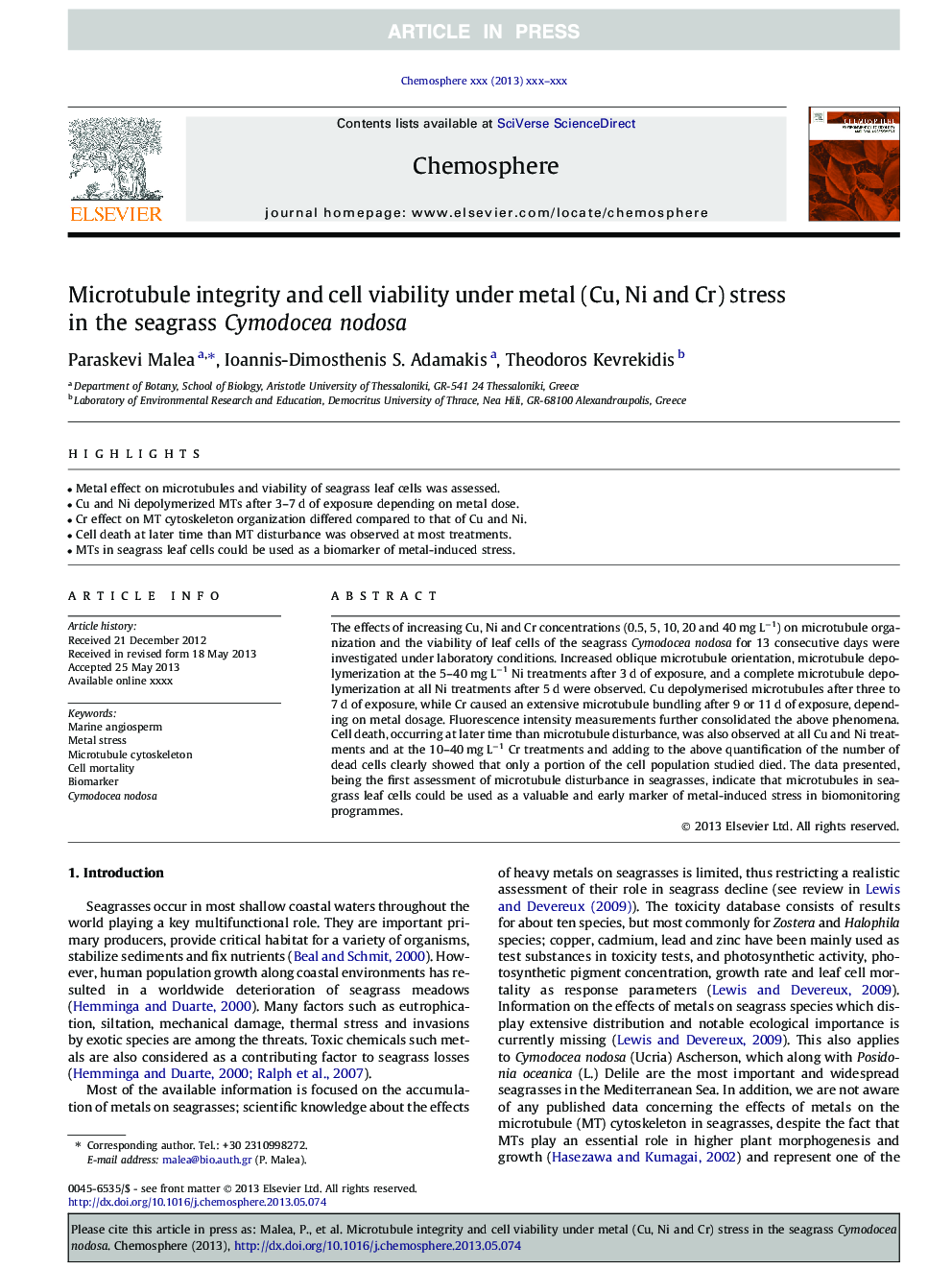| Article ID | Journal | Published Year | Pages | File Type |
|---|---|---|---|---|
| 6310300 | Chemosphere | 2013 | 8 Pages |
Abstract
The effects of increasing Cu, Ni and Cr concentrations (0.5, 5, 10, 20 and 40 mg Lâ1) on microtubule organization and the viability of leaf cells of the seagrass Cymodocea nodosa for 13 consecutive days were investigated under laboratory conditions. Increased oblique microtubule orientation, microtubule depolymerization at the 5-40 mg Lâ1 Ni treatments after 3 d of exposure, and a complete microtubule depolymerization at all Ni treatments after 5 d were observed. Cu depolymerised microtubules after three to 7 d of exposure, while Cr caused an extensive microtubule bundling after 9 or 11 d of exposure, depending on metal dosage. Fluorescence intensity measurements further consolidated the above phenomena. Cell death, occurring at later time than microtubule disturbance, was also observed at all Cu and Ni treatments and at the 10-40 mg Lâ1 Cr treatments and adding to the above quantification of the number of dead cells clearly showed that only a portion of the cell population studied died. The data presented, being the first assessment of microtubule disturbance in seagrasses, indicate that microtubules in seagrass leaf cells could be used as a valuable and early marker of metal-induced stress in biomonitoring programmes.
Related Topics
Life Sciences
Environmental Science
Environmental Chemistry
Authors
Paraskevi Malea, Ioannis-Dimosthenis S. Adamakis, Theodoros Kevrekidis,
